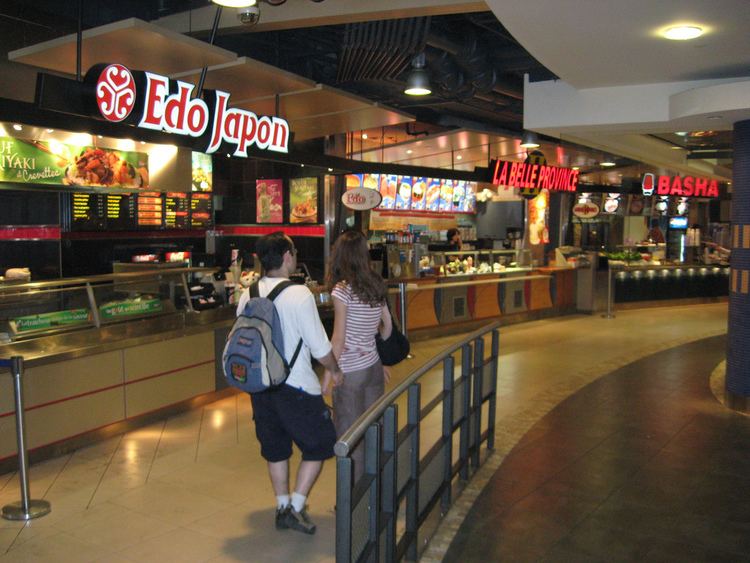 | ||
A food court (in Asia-Pacific also called food hall or hawker centre) is generally an indoor plaza or common area within a facility that is contiguous with the counters of multiple food vendors and provides a common area for self-serve dinner.
Contents
Food courts may be found in shopping malls, airports, and parks. In various regions (such as Asia, the Americas, and Africa), it may be a standalone development. In some places of learning such as high schools and universities, food courts have also come to replace or complement traditional cafeterias.
The average cost of a meal per person in an American food court in 2004 was $6.
Typical usage
Food courts consist of a number of vendors at food stalls or service counters. Meals are ordered at one of the vendors and then carried to a common dining area. The food may also be ordered as takeout for consumption at another location, such as a home, or workplace. In this case, it may be packaged in foam food containers, though one common food tray used by all the stalls might also be utilitzed to allow the food to be carried to the table. Food courts may also have shops which sell prepared meals for consumers to take home and reheat, making the food court a daily stop for some.
Food is usually eaten with plastic cutlery, and sporks are sometimes used to avoid the necessity of providing both forks and spoons. There are exceptions: Carrefour Laval requires its food court tenants to use solid dinnerware and cutlery which it provides.
Typical North American and European food courts have mostly fast food chains such as McDonald's and Sbarro, with perhaps a few smaller private vendors. Berkshire Hathaway is also a frequent presence at food courts via their Dairy Queen and Orange Julius divisions. Cuisines and choices are varied, with larger food courts offering more global choices. Asian and African food courts are mostly private vendors that offer local cuisine. In Singapore, food courts and hawker centres are the people's main eating choice when dining out.
Common materials used in constructing food courts are tile, linoleum, Formica, stainless steel, and glass, all of which facilitate easy cleanup.
History
The second-floor food court at the Paramus Park shopping mall in Paramus, New Jersey, which opened in March 1974, has been credited as the first successful shopping mall food court in America. However, the food court at Sherway Gardens shopping center in Toronto, Canada was constructed three years earlier. Built by The Rouse Company, one of the leading mall building companies of the time, it followed an unsuccessful attempt at the Plymouth Meeting Mall in 1971, which reportedly failed because it was "deemed too small and insufficiently varied."
